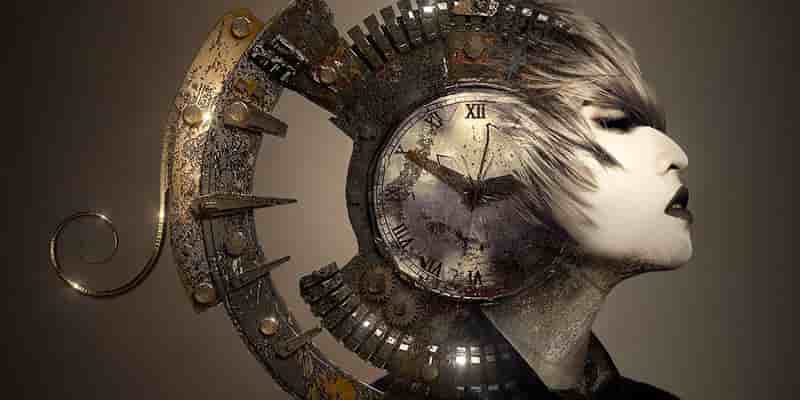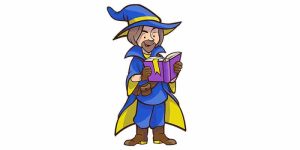Building a unique puzzle in DnD 5e can be daunting. However, when we break down common adventure puzzles, we can figure out the nuts and bolts of these fun encounters.
To build a unique puzzle in Dungeons and Dragons 5e, consider these tricks and fundamentals:
- Why a puzzle? Make the puzzle have a purpose.
- The 3-step solution: numbers, patterns and letters
- Environmental puzzles: teamwork
- Door puzzles: passwords and locks
- Puzzle dungeons: treasure for the worthy
- Hints and NPC puzzle guides
Why a puzzle? Make the puzzle have a purpose.
Puzzles need a logical purpose inside a campaign. Sure, as the DM, we just want to include fun elements in our stories to engage our players. However, these encounters need a purpose—especially non-monster encounters that may not directly add experience points. When a puzzle situation occurs during a campaign, a natural question occurs: why is this here?
Consider the following examples for why a puzzle exists in the first place:
- Powerful wizards create a chamber of puzzles as a maze to protect a special treasure.
- Secret societies use complex passwords with cyphers. A regular password could simply be memorized and passed to nonmembers.
- Lesser gods are testing the mortal party inside a temple before delivering important knowledge.
The 3-step solution: numbers, patterns and letters
Next, we should consider what puzzles look like in a broad sense.
Before the players can get into the heart of the puzzle, they need to know what is going on. I almost called this section the 2-step solution, but players often need to find clues to how the puzzle operates. Therefore, players may need to make Investigation, Insight or Perception checks to figure out the puzzle mechanism.
The 2nd step generally revolves around gathering information from the object, painting, note or lock before them. Often, puzzles lead to cyphers—giving the players information to write down and piece together.
How many monsters are in the painting and what does their depiction mean? Are these dots I’m connecting drawing an image? Do these numbers I’m gathering connect to letters?
Naturally, the 3rd step is pulling the clues together to find an answer.
The letters from the cypher spell out a password. Or the lines drew a sequence of numbers to unlock a chest.
Environmental puzzles: teamwork
Some puzzles may be less literal, as in an environmental hazard that must be overcome to move forward. Consider adventuring encounters that make the players think outside the box and problem solve. In some ways, this scenario is similar to a logic puzzle—where the idea is to find an answer that isn’t obvious. These puzzles don’t necessarily hold 1 answer, so the party can be creative in their approach.
Related Posts:
Guide to Building a Sci Fi/Fantasy Campaign: DnD 5e
| Guide to Building a Haunted House Campaign: DnD 5e
|
A few examples of this type of puzzle are:
- A rotten bridge only allows 1 or 2 lightweight characters to cross before collapsing. Now, the rest of the team needs to cross the open rift without a reliable bridge.
- An important scroll sits on flat stone surface in the center of a pool. However, the stone island barely sits above the calm water line, causing any disturbance of the water to flood the space and ruin the paper. Add in a failsafe that prevents spellcasting and avoid this puzzle when players can clearly fly.
- Lava floods a valley city and players must run a maze-like obstacle course of stone buildings and structures as the lava rises.
Door puzzles: passwords and locks
In roguish adventures, passwords, complicated locks and expensive secrets are common occurrences. Whether the party is attempting to gain access to a secret society or simply trying to get past a locked door, we have an opportunity to set up a puzzle.
As I mentioned before, passwords can me multifaceted. A clever guild may require an answer to any of a handful of riddles, expecting its members to know or figure out the answer. One way we could set this up is to have the party come across these riddles before they reach the door—possibly through social interaction or investigation. However, the guild could test for common occurrences within their trade, making the answer something a guildmember would commonly come across or know about.
Tasha’s Cauldron of Everything presents a simple and effective Skeleton Key puzzle that could be implemented for opening chests or doors. Firstly, this combination of locks cannot be picked. Several keys with varying numbers of teeth must be matched with a corresponding keyhole. The keyholes are marked by animals: wolf, bat, spider, snake. The key to solving the puzzle is to correlate the number of letters in the creature’s name with the number of teeth on the key that matches.
If the party gets the puzzle wrong, drop in a monster encounter.
Puzzle dungeons: treasure for the worthy
Mazes and floor puzzles can turn an entire dungeon into one large puzzle. On the other hand, we could block off rooms to present an assortment of puzzles to solve (think wizard chamber from example in first section). Either way, we can implement multiple types of puzzles into one dungeon crawl.
When creating a maze, the dungeon opens into a big puzzle. However, we can plant smaller problems inside the maze to spice the adventure up. Of course, a minotaur or beholder lurking in the depths can increase the intensity and keep with the theme. Maybe a gate with a Skeleton Key puzzle blocks a hallway… and the monster is closing in.
Of course, we shouldn’t forget floor puzzles via Indiana Jones and the Last Crusade. This type of puzzle presents a tiled floor, with only certain tiles that are safe to stand on. Whether the tiles fall straight through the floor or trigger a booby trap is up to you. The easiest way to implement a puzzle with this set up is to create a word-search. Then, players can read a riddle on the wall and search for connecting answers in the crossword puzzle. However, wrong answers will be tied into the crossword puzzle to tempt players into a mistake.
Related Posts:
Guide to Building a Underground Campaign: DnD 5e
| Guide to Building an Illusion Wizard: DnD 5e
|
Hints and NPC puzzle guides
Sometimes, players need a little nudge to figure out their footing, so to speak, with the puzzle. Therefore, more complicated puzzles—or puzzles that feel more like a prolonged adventure—can use NPC creatures as guides to the players. These guides offer characters with Charisma an opportunity to flex their Deception, Persuasion and Intimidation rolls for clues to riddles.
Goblins, ghosts, fairies, automatons and imps could all be fun choices for a guide to the deep dungeon puzzle. Naturally, something more fantastical than a friendly human is preferable. I mean, they need a good reason to be in the middle of a dungeon or temple.
For a solid collection of premade puzzles, check out the final chapter of Tasha’s Cauldron of Everything.





